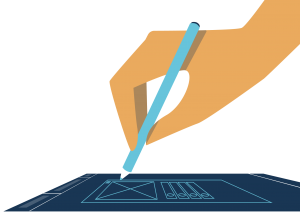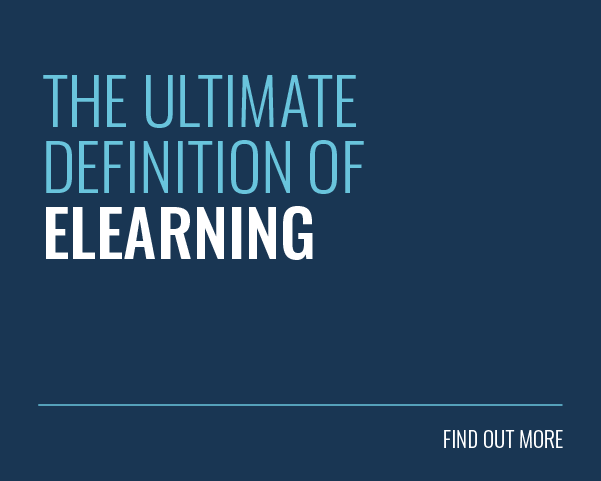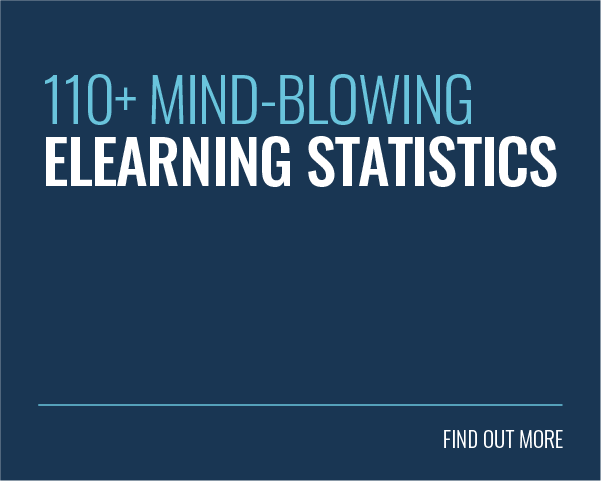 Now, more than ever, good instructional design matters. We face a period of great uncertainty and significant change. New training needs rear their head every day. New learning environments are being embraced. Who better to help us usher in this new age, than those who specialise in designing effective learning experiences? Instructional designers have all the characteristics we need to adapt to our ‘new normal’.
Now, more than ever, good instructional design matters. We face a period of great uncertainty and significant change. New training needs rear their head every day. New learning environments are being embraced. Who better to help us usher in this new age, than those who specialise in designing effective learning experiences? Instructional designers have all the characteristics we need to adapt to our ‘new normal’.
They know and understand the complex formula behind a good learning experience. But what makes a good instructional designer? We’ll get to that question soon enough. But first, let’s start with a definition.
What is An instructional Designer?
As the name suggests, an instructional designer designs instructional experiences. But it’s a little more complicated than that. Instructional design has its roots in behavioural psychology. It seeks to understand the behaviours that lead to the most effective learning outcomes. In this sense, instructional designers bring a methodological approach to creating learning experiences.
Instructional design has existed, in some shape or form, for as long as humanity has been designing learning experiences. But it was formalised in the 1940s, when training models adopted by the US Air Force were developed based on an understanding of human behaviour and instructional principles.
This systematic approach proved to be remarkably effective. Indeed, instructional design is a field that continues to flourish to this day. The Bureau of Labor Statistics forecasted an 11% growth in instructional design positions between 2016 and 2026. It would also be unsurprising if COVID-19 didn’t facilitate quicker growth than these projections suggest.
Given the increase in popularity and prominence of instructional design, the time seems right to take a closer look at their methods. Let’s break down the twelve must have characteristics for instructional designers.
1. Learner-focused
First and foremost, instructional designers are empathetic souls. They put themselves in their learners’ shoes and design instructional experiences for them. Instructional designers recognise that every learning experience has a specific audience.
As such, the more tailored the experience is to that audience, the better the learning outcomes. If you fail to pay attention to learners’ needs, interests and skills, you’ll end up with a one-size fits all learning approach that will be doomed to failure.
2. Consultative
Instructional design is by its very nature, a consultative process. We can’t begin to design a good learning experience if we haven’t consulted with key stakeholders to understand their training needs.
To set the right learning objectives and outcomes, we must first understand what success looks like. To be effective as an instructional designer, you must navigate these relationships nimbly. Furthermore, you must be an active listener and add value wherever possible.
3. Well Organised
Instructional designers are known for bringing a systematic approach to learning design. To be truly effective, however, they should also bring a similar mindset to their own workload. Instructional designers often have to work at pace towards tricky deadlines.
They also have to wear many different hats throughout the design process. To be successful, therefore, they need to remain focused, be goal-oriented and cultivate healthy organisational habits.
4. Data Driven
The importance of data in any learning intervention cannot be underplayed. Without access to this data, instructional designers are left in the dark. They will not know if the experience they created was effective or not. Once they do get access, they must be equipped to interpret the data and glean meaningful insights.
This allows instructional designers to update their learning experiences effectively. Following this, they can collect further datasets and iterate again and again, until they’ve got it just right.
5. Theory Driven
Instructional designers bring a methodological approach to learning design. To do this, they need a detailed knowledge of learning theory, instructional principles and best practice. They should know the impact that The Forgetting Curve has on learners.
They should use Bloom’s Taxonomy to categorise learning activities. And they should be familiar with frameworks like ADDIE, so they can add a clear structure to their development process. There are an endless number of instructional theories, so the learning never stops!
6. Detail Oriented
Effective instruction often requires corralling information from a variety of different sources. Instructional designers need to be able to hold all this detail in their minds and communicate it in an effective manner. It’s important to remember that inaccuracies can have real business and / or educational impact.
They can also sometimes require costly updates to existing learning assets. Whilst being able to adapt is important, it’s better to get some things right the first time.
7. Imaginative
Communicating complex ideas in simple ways isn’t easy. Different approaches can be effective in different contexts. In this sense, instructional design is a creative enterprise.
Those who can match a fierce imagination with core instructional principles are most likely to succeed. Moreover, good instructional designers also challenge learners to use their imagination. This can be doneif you ask them to use what they’ve learned to solve new problems.
8. Storytellers
According to American psychologist Jerome Bruner, you’re twenty times more likely to remember information if it’s delivered in narrative format. This makes storytelling a powerful weapon against The Forgetting Curve.
Instructional designers recognise that facts and figures alone are not enough. If we want information to stick, then we have to weave a narrative pathway throughout all our communications.
9. Tech-savvy:
As more and more learning experiences move online, instructional designers need to embrace new characteristics and be prepared to move with the times.
When used right, technology can facilitate effective learning experiences that have a positive impact on learners, businesses and educational institutions alike. For this to happen, however, instructional designers need to be open to embracing new solutions and willing to adapt their own approach.
10. Concise (When Necessary)
A recently published study from the Technical University of Denmark suggested that our collective global attention span is narrowing. This is in large part due to the volume of information we are presented with on a daily basis.
As such, modern instructional designers need to be masters at breaking up complex ideas and topics into easy to digest microlearning experiences. Small really is beautiful.
11. Visually Minded
Training materials must be visually engaging if they are to be effective. There’s no quicker way to lose a learner’s interest than to present them with a wall of text.
As such, instructional design often goes hand-in-hand with graphic design. You don’t need to be a master designer. But you should be willing to learn basic graphic design skills and keep upto date with relevant trends. You should also be able to work in line with brand specifications, whenever necessary.
12. Passionate
Last but certainly not least, instructional designers need to be passionate about what they do. This is not the kind of role that you can do on auto-pilot. Every aspect of instructional design requires careful consideration and skilled craftsmanship.
Moreover, it often requires multiple rounds of user feedback and iteration. Some projects can take months to complete, whilst others will have seemingly impossible deadlines. Without passion to fuel you, it’s all too easy to become unstuck.
Final Word
Instructional designers aim to craft learning experiences that achieve the three ‘E’s. These experiences need to be effective, efficient and engaging. In order to do this, instructional designers need a variety of different characteristics.
After all, creating a learning experience is a delicate balancing act. Instructional designers need to combine knowledge of their audience, stakeholder input, instructional theory and learning analytics to create experiences that have real impact.
Additionally, modern instructional designers also have to be savvy visual designers, embrace new tech and find creative ways to explain complex ideas. Indeed, to be an instructional designer is to embrace continuous learning.
Luckily, they should be well adjusted for this precise purpose.
Do you have all the qualities of an effective instructional designer? Then you deserve a quality tool. Growth Engineering Authoring Tool is a content authoring tool that makes creating engaging learning experiences easier than ever before. Try it for yourself by signing up for a free trial today!









